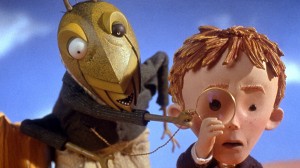 “There are drums in my head. Doom doom doom. It’s so difficult to breathe in this little clearing. Something has shifted. A bubble has burst. I want out. I feel faint. I’ve got to be away from this. I want to be back home, but that seems very far away… It’s too late… I am involved.”
“There are drums in my head. Doom doom doom. It’s so difficult to breathe in this little clearing. Something has shifted. A bubble has burst. I want out. I feel faint. I’ve got to be away from this. I want to be back home, but that seems very far away… It’s too late… I am involved.”
When Charlie answers an urgent knocking at his bedroom window, and follows Jasper Jones into the night, he certainly wasn’t expecting how this decision was going to have a major impact on his life. Jasper, socially rejected, desperately seeks out Charlie – the only one in the town of Corrigan he can trust.
But what horrific discovery did they make that night? Was their course of action really the one that they had to take? What was it about the town of Corrigan that made it so difficult for them to turn to others?
After the experiences of this night, Charlie finds Corrigan even more claustrophobic, as the small-minded community casts suspicions on the usual targets. Families become overprotective and guarded. Within his family, tensions rise. He becomes super-sensitive to the way people treat one another, and super-alert to the way different people react to the tragic news as it leaks out.
Through Charlie’s eyes, we learn about his friends’ lives, and observe the differences in the way they deal with what life dishes out to them. We laugh at the antics and comradery of mates, Jeremy and Charlie. We despair at the way Jeremy is bullied, and cheer his strength of character. Similarly, we can care about, but not pity, Jasper as he meets the extreme challenges of life in a small-minded community, tainted by his family background. And Charlie struggles to see why things should be this way, while he also deals with his own personal rollercoasters of life and love.
Jasper Jones has been touted as an ‘Australian “To Kill a Mockingbird”‘. It deals with issues of sterotyping, racism and closed minds. It does so, with real characters, teenagers dealing with all the angst of adolescence. It’s an interesting tale from a talented writer with a few surprise turns, and well worth a read. Recommended for the YA market, say 15+ – especially those tackling ‘To Kill a Mockingbird’, which it uses as a framework to reflect the Australian teenage experience.
Recognition for Silvey
There has been great praise for Craig Silvey’s book, and there have been several awards for JJ and Silvey, including:
- Winner of the Indie Book of the Year – 2009
- Winner of the 2010 Australian Book Industry Awards Book of the Year, Book of the Year.
- Shortlisted for the Miles Franklin Award – 2010
- Shortlisted for the NSW Premier’s Prize for Fiction- 2010
- Shortlisted for the Kathleen Mitchell Award – see judges’ comments on Jasper Jones here.
- Sydney Morning Herald Best Young Novelist Awards – 2005 – at the age of 22 – details here.
(N.B. The most recent cover (shown here) is a great improvement on the first cover issue.)



